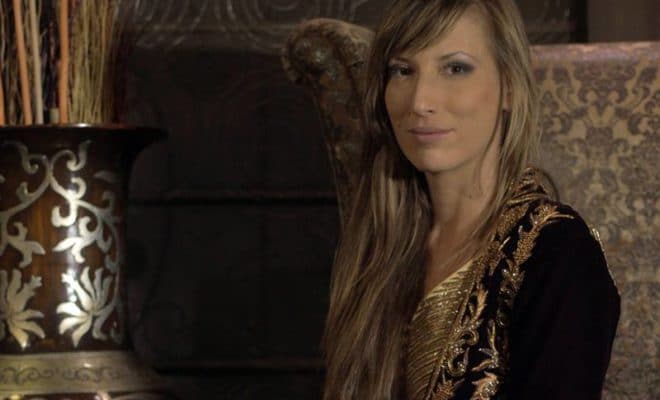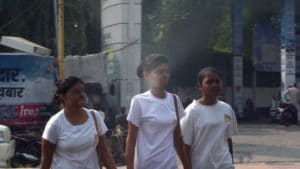Arts
Rupa’s Boutique: Strength After the Scars

Glória Halász
“Their stories shook us,” says Hungarian filmmaker Glória Halász about Indian acid attack survivors featured in her award-winning documentary.
As a documentary filmmaker, Glória Halász was sure that she would one day portray a story from India through her documentaries. She did not let go of this dream and portrayed the lives of acid attack survivors in the country in her latest award-winning documentary film, Rupa’s Boutique.
“I’ve been attracted to India ever since I was a child,” the Hungarian filmmaker tells Little India. “I came to India seven years ago and my fondness for the country only grew stronger. I think, there are only a few places in the world where dualities are so typical, even in everyday life.”
Not everyone would want to bet their own money on a project that could be riddled with challenges, given the stigma that acid attack survivors face. Yet Halász, who is in her early thirties, was determined to act on her ideas.
It all started a few years ago, when the Budapest-based filmmaker read an article about acid attacks on women in India. She then came across the Stop Acid Attacks campaign. It did not take her long to get convinced that she wanted to give a voice to these women and spread their message far and wide. “I wanted to show the contrasts in their lives, their present situation versus their aspirations in life,” she says.
When she found Rupa, her story intrigued and excited Halász at the same time. The acid attack survivor ran her own boutique in Agra, and that, Halász thought, could serve as the perfect premise to quash stereotypes that people have around beauty and fashion.

A still from Rupa’s Boutique
The initial phases of the project presented many logistical challenges, including finding a producer. She started making the film in 2015 as a self-financed project and it later was co-produced by Filmfabriq, Cinelabyrinth and the Indian Pinak Films, along with Gábor Osváth, Praaful Chaudhary and Balázs Hatvani.“The pre-production of the film took more than a year and my Indian friends went out of their way to support me,” adds Halász.
She traveled to Delhi with cinematographer Balázs Hatvani for the shoot and realized that making a documentary on these women would not be easy, as the incident has left deep scars in their lives. “Although the women shown in the film were over the incident due to their self-belief, determination and with the help of support groups like Chhanv, recalling their tragedy in front of the camera was difficult for most of them, the filmmaker reveals. “It deeply touched and shook all of us, who were behind the lens.”
To get a perspective of how this sort of hate and vengeance stems in the minds of people, she also interviewed a perpetrator of an acid attack. “Shooting a perpetrator of an acid attack can be very disturbing, it was not easy at all,” she says.
The documentary also opened her eyes about the stigmatization that these women face by the society, to the extent that some of them are afraid to report the crime to the authorities.

Acid attack survivors in the film
Halász approached several film and documentary festivals across the world with an objective to spread more awareness about these survivors. The international premiere of Rupa’s Boutique took place in Australia, at the Women Media Arts and Film Festival, that was a part of the Sydney Fringe Festival. The movie received the first prize in this festival. And went on to receive many others. In October this year, the film grabbed the Grand Jury Award at the United Nations Association Film Festival (UNAFF) at San Francisco.
The essence of its story lies in its message, which is that of hope. The subtle visuals and poignant stories of these women touch viewers across the world.
Halász feels that her inclination towards choosing subjects that have a strong underlying message will remain steadfast if she chooses fictional subjects. Her next documentary revolves around the lives of three generations of ballet dancers in her country. She is also working on the script of her first fiction movie.
Halász hopes that she is able to come back to India to make a film. “India is one of my favorite countries,” she says. “I love the people, the culture and the colors of this country. The best part about India is that it can never get boring here.”

You must be logged in to post a comment Login